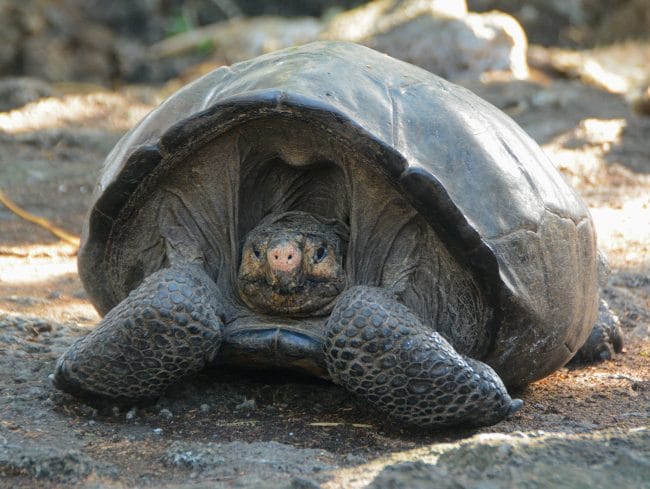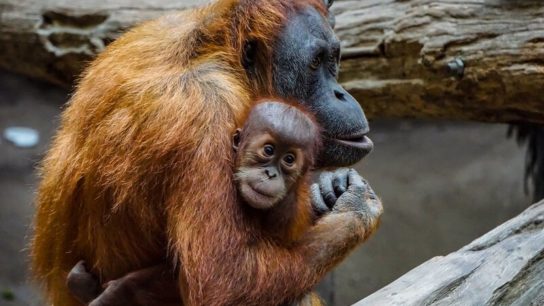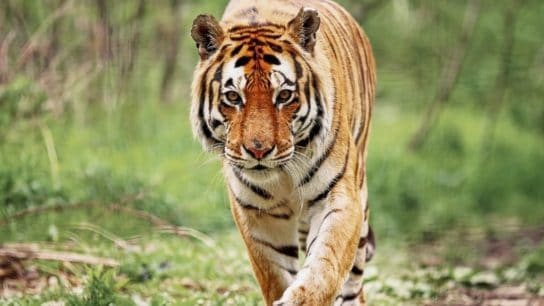Ecuador has confirmed that a giant tortoise found in 2019 in the Galapagos Islands is a species thought to have gone extinct 112 years ago. The Galapagos national park is now preparing for an urgent expedition to search for more of the giant tortoises to save the species.
—
What is Happening?
- The female Giant Tortoise was found in 2019 on Fernandina Island during a joint expedition of the Galapagos National Park Directorate (GNPD) and Galapagos Conservancy.
- The Fernandina Giant Tortoise (Chelonoidis phantasticus) was last reported 112 years ago and long considered lost forever.
- At the time of discovery, the GNPD and Galapagos Conservancy team was confident that the female Giant Tortoise was the lost Fernandina Giant Tortoise. However, to verify their assumption, a blood sample was sent to geneticists at Yale, where a team led by Dr. Gisella Caccone sought to uncover the genetic origin of the female tortoise and determine how closely it matched the only other tortoise ever found on Fernandina Island, a now-deceased large male found in 1906.
- Nicknamed “Fern” by her discoverers, genetic analysis has now confirmed that she is related to the Chelonoidis phantasticus tortoise species native to the island. These findings verify what researchers at Galapagos Conservancy and GNPD had long hoped for.
Ecuador environment minister Gustavo Manrique was jubilant, saying on his Twitter account, “It was believed extinct more than 100 years ago! We have reconfirmed its existence.”
- To find Fern a mate (and avoid the same fate as Lonesome George – the last Pinta Giant Tortoise who died in 2012 and left no offspring) an urgent expedition to Fernandina Island will be launched by GNPD and Galapagos Conservancy to save the species.
Dr. James Gibbs, Vice President of Science and Conservation for the Galapagos Conservancy and tortoise expert at the State University of New York, says, “One of the greatest mysteries in Galapagos has been the Fernandina Island Giant Tortoise. Rediscovering this lost species may have occurred just in the nick of time to save it. We now urgently need to complete the search of the island to find other tortoises.”
You might also like: The Project Working to Provide a Lifeline For Trafficked Orangutans
- Fernandina Island’s landscape is dominated by an active volcano that makes expeditions very challenging. If a male tortoise is located on the volcanic terrain, he will be united with the lone female at the Galapagos National Park’s Giant Tortoise Breeding Center in Santa Cruz. Scientists would then oversee breeding efforts, rear any young safely in captivity, and eventually return them to safe habitats on their native island of Fernandina.
- While populations of Giant Tortoises were decimated throughout the Galapagos archipelago in the 19th century due to exploitation by whalers and buccaneers, the Fernandina Giant Tortoise species was believed to be extinct due to volcanic eruptions in past centuries. The current population of Giant Tortoises throughout the Islands is only 10-15% of its historical numbers, estimated between 200 000-300 000 individuals. The current population of giant tortoises from various species is estimated at 60 000, according to data from the Galápagos national park
- But there is hope. Park rangers have found signs (tracks and scat) of at least two other tortoises on Fernandina Volcano during the searches that resulted in the discovery of the lone female.
Featured image by: Galapagos.org

















